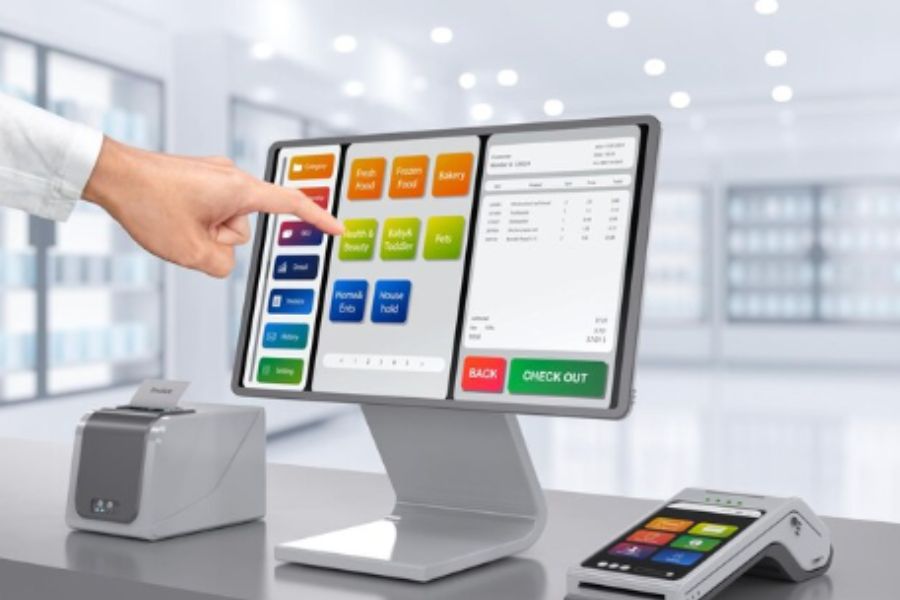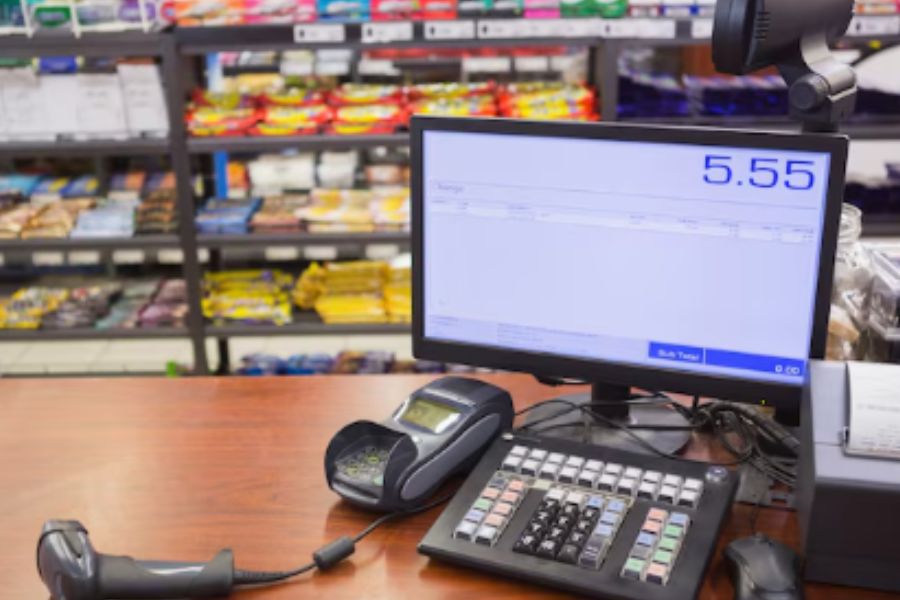Gun trade is a specialized business that must follow strict regulations in many aspects, influencing the criteria for their tools, including gun shop software. Compliance, efficient operations, and excellent customer service are vital in this industry. The right software manages inventory, adheres to ATF regulations, and improves overall business performance. For both small stores and large retailers, selecting appropriate software can significantly enhance business efficiency and growth. This guide outlines key considerations for choosing gun shop software, helping you make an informed decision that aligns with your needs and regulatory requirements.
Highlights
- Gun shop software aims to streamline operations, ensure compliance, and improve customer management for efficient business.
- When selecting software, consider compliance, inventory management, and system integration as key factors.
- Effective gun retail management requires strategic planning, thorough staff training, and optimized operations.
The Purpose of Gun Shop Software
Gun shop software streamlines various aspects of firearms retail operations, making them more efficient and manageable. This specialized software integrates essential functions such as inventory management, sales tracking, and regulatory compliance into a unified platform.
Primarily, gun shop software aims to improve inventory accuracy, ensuring that stock levels are always up-to-date. This reduces the chances of overstocking or running out of popular items. Not only that, it simplifies regulatory compliance, helping shops adhere to local, state, and federal laws, which is the most crucial thing in the firearms industry.
Moreover, enhancing customer relationship management (CRM) is another key objective. The software tracks customer interactions and purchase history, enabling personalized service and targeted marketing campaigns. Robust point-of-sale (POS) features streamline the checkout process, reducing wait times and improving customer satisfaction.
Effective gun shop software should also offer scalability. This allows the system to grow alongside your business, accommodating increased inventory and sales volume without compromising performance. Integration capabilities are equally important, ensuring the software works seamlessly with other systems like accounting or e-commerce platforms.
In short, gun shop software is an invaluable tool for optimizing firearms retail operations. It boosts efficiency, ensures compliance, enhances customer service, and supports business growth. Investing in the right software can significantly impact your shop’s success.
Key Considerations When Selecting Gun Shop Software
Selecting the right software for your gun shop guarantees smooth operations, maintains compliance, and enhances firearms ecommerce. With a variety of options available, it’s important to focus on key aspects that will support your business’s unique needs.
Regulatory Compliance and Security
- Adhering to ATF Regulations:
Compliance with the Bureau of Alcohol, Tobacco, Firearms, and Explosives (ATF) regulations is the first and most important criterion for, basically, any gun shop. Look for software that includes features to help maintain accurate records of firearm sales and inventory, and generate required reports easily. It should support compliance with the Gun Control Act (GCA) and National Firearms Act (NFA), including documentation and record-keeping requirements.
- Robust Security Features:
Given the sensitive nature of firearms transactions, security is paramount. The gun shop software should use strong encryption to protect customer data and transactional information. Features like multi-factor authentication, secure backups, and access controls are necessary to safeguard against data breaches and unauthorized access.
Inventory Management Capabilities
- Real-Time Inventory Tracking:
Preventing overstocking or stockouts becomes manageable with real-time inventory tracking. Opt for software that provides live updates and alerts for low inventory levels, facilitating prompt reordering and efficient stock management.
- Integration with Suppliers:
Simplifying the ordering and inventory management processes can be achieved through seamless supplier integration. The software should automatically update inventory levels based on supplier data and streamline the reordering and management of purchase orders.
Point of Sale (POS) Features
- User-Friendly POS Interface:
Enhancing transaction efficiency involves a straightforward, intuitive POS interface. Ensure the system is easy for staff to learn and use, minimizing training time and reducing errors during checkout.
- Sales Reporting and Analytics:
Detailed sales reporting and analytics capabilities are fundamental for tracking performance and making data-driven decisions. Look for software that provides customizable reports, sales trends analysis, and performance metrics to help you understand your business better and optimize operations.
Customer Relationship Management (CRM)
- Comprehensive CRM Tools:
A robust CRM system helps manage customer relationships and improve engagement. The software should offer features like customer profiles, purchase history tracking, and loyalty programs. These tools can enhance customer service and foster long-term relationships.
- Communication Channels:
Effectively reaching out to customers involves supporting various communication channels, such as email, SMS, and social media. The CRM should facilitate efficient promotions, updates, and follow-ups across these platforms.
Integration with Other Systems
- Accounting Software Integration:
Streamlining financial management becomes easier with integration between your gun shop software and accounting software. This ensures accurate reflection of sales data, expenses, and inventory costs in your financial records, reducing manual entry and errors.
- E-Commerce Platform Integration:
For gun shops with an online presence, seamless integration with e-commerce platforms is important. The software should synchronize inventory, manage online orders, and update stock levels in real-time across both online and physical stores.
Cost Considerations
Evaluating software options involves considering both initial costs and ongoing expenses, including subscription fees, maintenance, and potential upgrades.
Ensure the software’s features align with your business’s budget and needs, justifying the investment.
Additional Factors
- Customer Support and Training
Adopting new software can be challenging, so reliable customer support and training are essential. Verify that the provider offers comprehensive training resources and responsive support, including user manuals, tutorials, and access to dedicated customer service representatives.
- Scalability and Flexibility
As your gun shop expands, your software should grow with your business. Look for solutions that offer flexible options for adding features, users, or locations, allowing the software to adapt to your changing needs without requiring a complete overhaul.
ConnectPOS is an exceptional POS solution suited for various types of businesses, including gun shops. It offers comprehensive features customized to meet the specific needs of firearms businesses. With strong regulatory compliance capabilities, ConnectPOS ensures adherence to ATF regulations by maintaining accurate records and generating required reports seamlessly.
Its advanced security measures, including strong encryption and multi-factor authentication, safeguard sensitive customer data and transactional information. The real-time inventory tracking and supplier integration streamline stock management and reordering processes, preventing overstocking or stockouts. The user-friendly POS interface enhances transaction efficiency while the detailed sales reporting and analytics provide valuable insights for data-driven decision-making.
Not only that, ConnectPOS integrates seamlessly with accounting software and e-commerce platforms, ensuring a unified system for financial management and online order synchronization. Supported by excellent customer service and training resources, ConnectPOS is a scalable and flexible solution that can adapt to the growing needs of any gun shop.
Best Practices for Effective Gun Shop Software Implementation
This guide provides best practices for a successful implementation, focusing on strategic planning, comprehensive staff training, and thorough testing and optimization.
Strategic Planning and Preparation
A successful software implementation begins with detailed strategic planning and preparation. This phase involves assessing your business needs, setting clear objectives, and developing a comprehensive implementation plan.
- Step 1: Define Business Objectives
Before selecting or implementing software, clearly define your business objectives. Identify what you aim to achieve with the new system-whether it’s improving inventory management, ensuring regulatory compliance, or enhancing customer service. This will guide your software selection process and help you choose a system that aligns with your goals.
- Step 2: Assemble a Project Team
Create a dedicated project team responsible for overseeing the implementation process. This team should include key stakeholders such as IT personnel, operational managers, and end-users. Their diverse perspectives will help address various needs and potential challenges during the implementation.
- Step 3: Develop a Detailed Implementation Plan
Outline a detailed implementation plan that includes timelines, milestones, and resource allocation. Define each phase of the implementation process, from initial setup and configuration to data migration and go-live. A well-structured plan ensures that all aspects of the implementation are covered and helps manage expectations.
- Step 4: Conduct a Needs Assessment
Perform a thorough needs assessment to understand the specific requirements of your gun shop. Evaluate current processes, identify gaps, and determine how the new software can address these issues. This assessment will help tailor the software’s configuration to better fit your operational needs.
- Step 5: Prepare for Data Migration
Data migration is a critical aspect of software implementation. You must make sure that all existing data, such as inventory records and customer information, is accurately transferred to the new system. Plan for data cleansing to remove any inaccuracies or redundancies before migration.
Comprehensive Staff Training
Effective staff training is essential for a smooth transition and to maximize the benefits of the new software. Proper training ensures that users are familiar with the system’s features and can utilize it efficiently.
- Step 1: Develop a Training Program
Create a structured training program that covers all aspects of the software. This should include initial training sessions, ongoing education, and access to resources such as user manuals and help guides. Tailor the training program to different user roles, from administrative staff to sales associates.
- Step 2: Conduct Hands-On Training
Provide hands-on training to allow staff to interact with the software in a controlled environment. Practical exercises help users become comfortable with the system’s functions and build confidence in using it. Include real-world scenarios to make the training relevant and applicable.
- Step 3: Utilize Vendor Resources
Leverage resources provided by the software vendor, such as training materials, webinars, and customer support. Many vendors offer comprehensive training packages that can be customized to your specific needs. Engage with the vendor’s support team to address any questions or concerns during the training process.
- Step 4: Encourage Continuous Learning
Offer ongoing training opportunities to promote a culture of continuous learning. As software updates and new features are released, provide refresher courses and updates to ensure that staff stays current with the system’s capabilities. Regular training helps maintain proficiency and adaptability.
- Step 5: Monitor and Evaluate Training Effectiveness
Assess the effectiveness of the training program by gathering feedback from users and monitoring their performance with the new software. Identify any areas where additional training or support may be needed. Continuous evaluation ensures that the training program remains relevant and effective.
Thorough Testing and Optimization
Thorough testing and optimization are vital for ensuring that the software performs as expected and integrates seamlessly with existing systems. This phase involves validating the software’s functionality, identifying issues, and making necessary adjustments.
- Step 1: Conduct Pilot Testing
Before fully deploying the software, conduct pilot testing to evaluate its performance in a controlled environment. Select a small group of users to test the system’s features and workflows. Pilot testing helps identify any issues or limitations that may need to be addressed before the full rollout.
- Step 2: Perform User Acceptance Testing (UAT)
User Acceptance Testing (UAT) involves having end-users test the software to ensure it meets their needs and expectations. Gather feedback from users on the system’s usability, functionality, and performance. Address any concerns or issues identified during UAT to ensure a smooth transition.
- Step 3: Optimize System Configuration
Based on testing feedback, optimize the system configuration to better align with your business processes. Adjust settings, workflows, and integrations to enhance performance and usability. Continuous optimization helps ensure that the software operates efficiently and effectively.
- Step 4: Monitor System Performance
After deployment, continuously monitor the system’s performance to identify any issues or areas for improvement. Track key performance indicators (KPIs) such as system uptime, response times, and user satisfaction. Regular monitoring helps maintain optimal performance and address any emerging issues promptly.
- Step 5: Provide Ongoing Support
Establish a support system to address any post-implementation issues or questions. Provide users with access to technical support, troubleshooting resources, and updates. Ongoing support ensures that any challenges are promptly addressed and that the software continues to meet your business needs.
FAQs: Gun Shop Software
- What are the most important features to look for in gun shop software?
The most important features include ATF compliance tools, robust security measures, real-time inventory tracking, user-friendly POS functionality, comprehensive CRM capabilities, and integration with accounting and e-commerce platforms.
- How can gun shop software help with compliance and regulatory requirements?
Gun shop software assists with compliance by providing electronic record-keeping, automated reporting, and integration with background check systems. It ensures that all transactions and inventory movements are documented and accessible for audits.
Conclusion
In sum, focusing on key considerations such as regulatory compliance, robust security features, real-time inventory tracking, and integration capabilities, you can choose a solution that meets your gun shop needs. Gun shop software like ConnectPOS offers comprehensive tools tailored to the firearms industry, including seamless ATF compliance and user-friendly POS features.
For more information about ConnectPOS and how it may supercharge your gun shop, contact us today!



